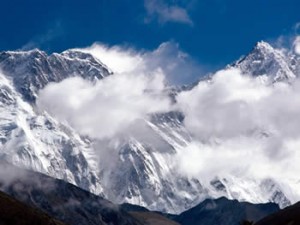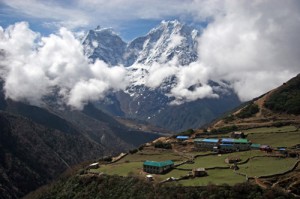Discrepancies in government policies and on-the-ground realities is common in just about every country in the world. Â This is true in Nepal as well; especially when it came to education. Â The official government policy on education is ‘education for all’, but this was not what we observed. Despite the government’s stance, education was not being provided to all equally, especially if you were a girl, and a lot of that seemed to be due to inadequate facilities and lack of financial support to schools.
Education, specifically girls’ education, came up in every district we stopped in. We spoke to girls about their schools as we walked through small villages in the hills around Pokhara, we brought up education programs in most organizations we met dealing with youth issues, but the most vivid experience we had regarding education was visiting a school that educates over 1,000 students a year grades 1-11 in the Bara District. When we arrived at the school, which didn’t look like any school I had seen in my life, just a two story concrete structure with several rooms and an uncovered staircase without railings or barriers on the right side of the building, many men from the neighboring village greeted us.

Men who greeted us at school
Standing in the middle of this crowd with the other students listening to our professor introduce us and the headmaster of the school, it didn’t take me long to notice that we were standing in a sea of men, not a single woman was in sight. The building was basic. One classroom for each grade, meaning that some classrooms held hundreds of students, the headmaster told us that half of the schools population were girls. This became particularly puzzling for me as the classrooms got increasingly smaller as the grades increased, as sign that people were dropping out.

Classroom for 6 graders, One of the biggest rooms holding over 300 students
Much of the research published on girls’ education indicates that girls in many developing countries begin dropping out of school around puberty to take on household duties, because they miss so much school due to their menstrual cycles, or because they have been married. I also noted that I didn’t see a single bathroom, which at the time didn’t strike me because I was aware that defecating out in the open was perfectly acceptable in this culture. Looking back on our trip and at my written observations and photographs of this stop, however, I wonder without restroom facilities how girls manage to take care of their hygienic needs while at school? Is this absence of a major facility within the school why girls cannot continue their education passed puberty?  It is this lack of female friendly facilities, as simple as a restroom, that adds to the mounting structural barrier working against women’s equality.
While the headmaster said half of the students were girls, and the government says education for all, something seems to not match up. Â Maybe half of the students are girls in the lower grades, but if the classes are getting smaller, someone is dropping out, and from what we’ve read and observed, I am fairly certain those drop outs are girls. Â Education for all is a great stance. It would be even better if the policy was able to be carried out on the ground.







